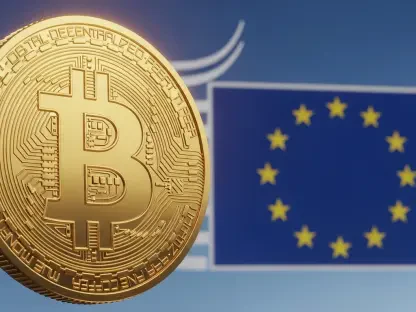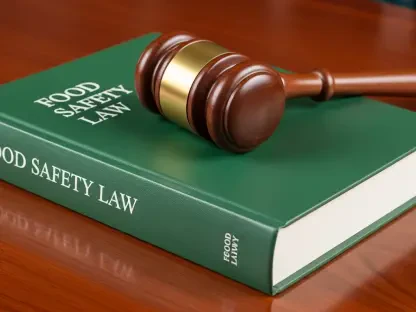In a landmark ruling that has sent ripples through legal and social circles, the Supreme Court has temporarily lifted a federal judge’s injunction in Los Angeles, granting federal immigration agents broader authority to conduct stops. This decision, rooted in the case Noem v. Perdomo, halts restrictions that were put in place to combat suspected racial profiling by prohibiting stops based solely on factors such as race, ethnicity, or language. The ruling has ignited fierce debate, drawing a line between those who prioritize law enforcement flexibility and those who fear the erosion of constitutional protections. As the legal battle continues, the implications of this stay extend far beyond the city’s borders, touching on fundamental questions of civil rights, judicial oversight, and the balance of power in immigration policy. This development sets the stage for a deeper exploration of how such decisions shape both legal precedents and community trust in enforcement practices.
Legal Background and Context
Origins of the Dispute
A series of immigration raids in Los Angeles earlier this year sparked significant controversy, leading to a legal challenge that has now reached the highest court in the land. These operations, described by some officials as part of an expansive deportation initiative, targeted areas with high undocumented populations, raising alarms over potential discrimination. A coalition of U.S. citizens and undocumented immigrants filed a lawsuit, claiming that the stops infringed on their Fourth Amendment rights against unreasonable searches and seizures. U.S. District Judge Maame Ewusi-Mensah Frimpong responded with an injunction that barred federal agents from making stops based purely on characteristics like race, ethnicity, language, or occupation. This ruling aimed to prevent what plaintiffs described as systemic profiling, setting a strict standard for reasonable suspicion that agents found overly restrictive in their day-to-day operations.
The aftermath of Judge Frimpong’s injunction revealed a stark divide between enforcement priorities and individual protections. The plaintiffs argued that without such judicial intervention, communities—particularly Latino and low-wage workers—would remain vulnerable to arbitrary detention and deportation. Their concerns were grounded in documented instances where individuals were stopped based on superficial traits rather than specific evidence of wrongdoing. The injunction sought to address historical patterns of bias in immigration enforcement, pushing for a framework where stops required clear, individualized justification. However, federal authorities quickly challenged this restriction, asserting that it undermined their ability to manage immigration effectively in a city known for its diverse and dense population, thus paving the way for higher court intervention.
Supreme Court’s Intervention
The Supreme Court’s recent decision to issue a stay on Judge Frimpong’s injunction marks a pivotal shift in the ongoing legal saga over immigration enforcement practices. This temporary ruling, handed down in September, allows federal agents to conduct stops with fewer constraints while the Trump administration’s appeal moves through the judicial system. The administration has argued that the lower court’s restrictions created an operational “straitjacket,” severely limiting their capacity to address immigration challenges in key areas like Los Angeles. By pausing the injunction, the Supreme Court has signaled a potential alignment with enforcement needs over immediate civil rights safeguards, though the final resolution of the case remains pending as appellate arguments unfold.
This intervention by the Supreme Court has immediate consequences for how federal agents operate on the ground in Los Angeles. With the stay in place, officers can now rely on a broader set of factors to establish reasonable suspicion, including demographic and occupational indicators that were previously off-limits under the injunction. Critics of the decision worry that this expanded authority could lead to a resurgence of stops based on generalized assumptions rather than specific evidence. Meanwhile, the administration views the stay as a necessary step to maintain order and uphold immigration laws in regions with significant undocumented populations. The tension between these perspectives underscores the complexity of the issue as the legal process continues to evolve.
Judicial Philosophies and Divisions
Conservative Perspective on Enforcement
Justice Brett Kavanaugh’s concurrence in the Supreme Court’s stay offers a window into the conservative judicial approach to immigration enforcement. Supporting the decision to lift the injunction, Kavanaugh emphasized that the judiciary should refrain from overstepping into policy arenas traditionally managed by the executive branch. He argued that courts are tasked with ensuring constitutional compliance, not crafting enforcement strategies, and suggested that the lower court’s restrictions overreached by imposing undue burdens on federal agents. His stance reflects a broader conservative philosophy that prioritizes law enforcement flexibility, particularly in complex areas like immigration, where operational challenges often require swift and pragmatic responses.
Kavanaugh’s reasoning also touched on the practicalities of enforcement in high-density areas like Los Angeles, where factors such as location and occupation might collectively contribute to reasonable suspicion. He posited that a “totality of circumstances” approach is essential for agents to perform their duties effectively, even if it includes considerations that some view as potentially discriminatory. Additionally, he raised doubts about the challengers’ legal standing, suggesting their claims of future harm were speculative and insufficient to justify broad judicial intervention. This perspective underscores a reluctance to constrain executive authority through court rulings, highlighting a significant ideological underpinning of the majority’s decision to issue the stay.
Liberal Concerns Over Rights
In sharp contrast to the majority’s view, Justice Sonia Sotomayor, joined by Justices Elena Kagan and Ketanji Brown Jackson, issued a dissent that warns of the serious risks posed by the Supreme Court’s stay. Their primary concern centers on the potential for racial profiling, as they argue that lifting the injunction could enable federal agents to target individuals—particularly Latinos and low-wage workers—based on superficial characteristics rather than specific, individualized evidence. Sotomayor stressed that reasonable suspicion must be grounded in particular facts, not broad stereotypes, to uphold the Fourth Amendment’s protection against unreasonable searches and seizures. This dissent reflects a deep commitment to safeguarding constitutional rights against the backdrop of enforcement expediency.
The dissenting justices also highlighted the historical context of discrimination in immigration enforcement, pointing to patterns of bias that have disproportionately affected certain communities. They cautioned that the stay risks perpetuating these inequities by loosening the standards for stops, potentially leading to widespread distrust and fear among immigrant populations. Their argument extends beyond the immediate legal implications, touching on the broader societal cost of policies that appear to prioritize efficiency over fairness. By framing the decision as a step backward in the fight against systemic bias, the dissenters aim to keep the issue of equitable treatment under the law at the forefront of public and judicial discourse, even as the case progresses through further appeals.
Key Legal Issues at Stake
Debate Over Standing
A critical element in the ongoing legal battle over immigration stops in Los Angeles is the question of standing—the legal right of the challengers to bring their case before the court. The Trump administration contends that the plaintiffs, comprising both U.S. citizens and undocumented immigrants, lack standing because they cannot definitively prove they will be targeted in future raids. This argument suggests that their fear of harm is too speculative to warrant judicial intervention, potentially limiting the ability of courts to oversee executive actions in immigration enforcement. If accepted, this position could set a precedent that shields similar operations from legal scrutiny, raising significant concerns about accountability in government practices.
The challengers, however, counter that denying standing would effectively allow the government to engage in unconstitutional actions without consequence, leaving affected communities without recourse. They argue that the pervasive nature of the raids and the documented use of discriminatory factors create a tangible risk of harm, justifying their right to sue. This debate over standing is not merely procedural but strikes at the heart of how much power courts have to check enforcement practices. As the appeal process continues, the resolution of this issue could redefine the boundaries of who can challenge immigration policies, influencing future litigation and the protection of civil liberties in similar contexts.
Constitutional Implications
The Supreme Court’s stay also brings into focus a profound clash between enforcement flexibility and individual rights under the Fourth Amendment, as reflected in the sharply divided opinions among the justices. On one hand, the majority’s decision to ease restrictions suggests a willingness to prioritize the operational needs of federal agents, viewing immigration enforcement as a domain where executive discretion should hold significant sway. This perspective aligns with the argument that broader criteria for reasonable suspicion are necessary to address the complexities of managing undocumented populations in urban centers like Los Angeles, even if it means accepting some level of generalized risk assessment.
On the other hand, the dissenting justices underscore the constitutional imperative to protect individuals from unreasonable searches and seizures, warning that the stay undermines this fundamental right by allowing stops based on insufficiently specific grounds. Their position highlights the danger of normalizing practices that could disproportionately impact certain demographic groups, eroding trust in the legal system. This split reflects a deeper tension within the judiciary about the balance between security and liberty, a question that remains unresolved as the case moves forward. The outcome of this legal struggle could set lasting precedents for how constitutional protections are applied in the realm of immigration enforcement, shaping policies for years to come.
Broader Societal Impact
National Immigration Policy Debate
The Supreme Court’s decision to temporarily lift restrictions on immigration stops in Los Angeles mirrors a longstanding national divide over immigration policy, pitting security and rule of law against fairness and human rights. For proponents of stricter enforcement, the ruling represents a necessary step to ensure that federal agents can address illegal immigration effectively, particularly in areas with significant undocumented populations. This viewpoint often aligns with broader political rhetoric emphasizing border control and national security as top priorities, framing immigration as a challenge that demands robust governmental action over individual considerations.
Conversely, advocates for immigrant rights see the stay as a setback in the fight for equitable treatment, arguing that it risks perpetuating systemic bias and alienating vulnerable communities. Their perspective draws on a growing movement to reform immigration policies to focus on humanitarian concerns, pushing for protections against profiling and arbitrary detention. This national debate, fueled by partisan differences and public opinion, continues to shape legislative and judicial approaches to immigration, with the current ruling serving as a flashpoint for discussions on how to reconcile enforcement imperatives with constitutional values. The outcome of this case could influence future policy directions on a much larger scale.
Community and Enforcement Dynamics
The implications of the Supreme Court’s stay extend deeply into the fabric of community relations with law enforcement in Los Angeles, where trust is already a fragile commodity. With federal agents now operating under fewer constraints, many immigrant communities fear an increase in stops that could feel indiscriminate or biased, potentially heightening tensions and reducing cooperation with local authorities. This dynamic risks creating a chilling effect, where individuals avoid engaging with public services or reporting crimes out of concern over immigration consequences, thereby undermining broader public safety efforts in diverse urban areas.
Beyond immediate interactions, the social ramifications of this ruling could reverberate through advocacy and community organizing, as groups intensify efforts to document and challenge perceived abuses. The decision may also prompt local governments and organizations to develop alternative support systems for affected populations, seeking to mitigate the impact of federal enforcement actions. As the legal process unfolds, the long-term effect on how immigrant communities perceive and interact with law enforcement remains a critical concern, with the potential to reshape social cohesion in cities facing similar challenges. Looking ahead, fostering dialogue and transparency between agencies and residents will be essential to address these evolving tensions.









